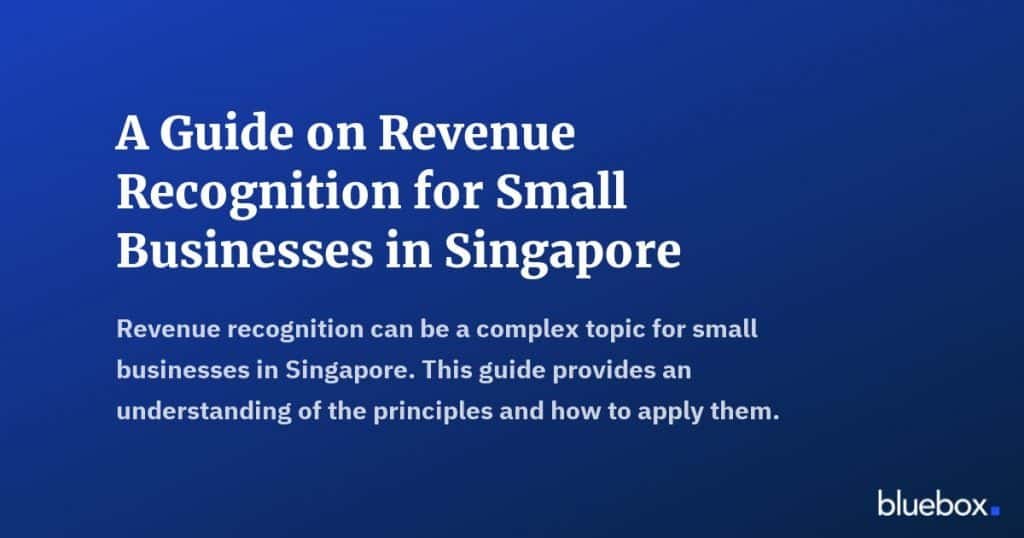As a small business owner in Singapore, understanding revenue recognition is crucial for financial management. Revenue recognition is the process of identifying and recording revenue earned in a specific accounting period. In this beginner’s guide, we will provide an overview of revenue recognition and its importance, the principles of revenue recognition, and the methods used to recognize revenue.
Importance of Revenue Recognition
Accurate revenue recognition is critical as it affects your business’s financial statements, profitability, and tax obligations. It is essential to follow the accounting standards prescribed by the Accounting Standards Council (ASC) to ensure financial statements comply with Singapore Financial Reporting Standards (SFRS) and the Companies Act.
Principles of Revenue Recognition
The principles of revenue recognition are based on the accrual accounting method. Revenue is recognized when it is earned, and not when cash is received. According to SFRS, revenue is considered earned when the following criteria are met:
1. The seller has transferred the goods or services to the buyer.
2. The seller has received a reliable measure of the transaction price.
3. The seller has determined that the collection of the transaction price is probable.
Methods of Revenue Recognition
There are five methods of revenue recognition: percentage of completion, completed contract, sales basis, cost recovery, and installment. The method used will depend on the nature and complexity of the transaction.
| Method | Definition |
|---|---|
| Percentage of completion | Recognizes revenue as work is completed. |
| Completed contract | Recognizes revenue only when a project is entirely finished. |
| Sales basis | Recognizes revenue when a product is sold. |
| Cost recovery | Recognizes revenue only after all costs have been recovered. |
| Installment | Recognizes revenue over time as payments are received. |
Percentage of completion method
This method recognizes revenue as work is completed. This approach is ideal for long-term projects where progress can be measured over time, providing a more accurate representation of revenue.
Completed contract method
This method recognizes revenue only when a project is entirely finished. This approach is suitable for short-term projects with a defined timeline and scope, ensuring that revenue is only recognized when all work is complete.
Sales basis method
This recognizes revenue when a product is sold, making it ideal for businesses with a high volume of sales. This approach is simple and straightforward, making it easy to implement and understand.
Cost recovery method
This is used when there is significant uncertainty surrounding the collection of revenue. This approach recognizes revenue only after all costs have been recovered, ensuring that the business is not left with any losses.
Installment method
This recognizes revenue over time as payments are received. This approach is ideal for businesses that receive payments over an extended period, providing a more accurate representation of revenue
Conclusion
Revenue recognition is a crucial aspect of financial management for small businesses in Singapore. By understanding the principles and methods of revenue recognition, you can accurately record revenue and comply with the accounting standards prescribed by the ASC. By following these guidelines, you can ensure your business financial statements are accurate and compliant with regulations.
